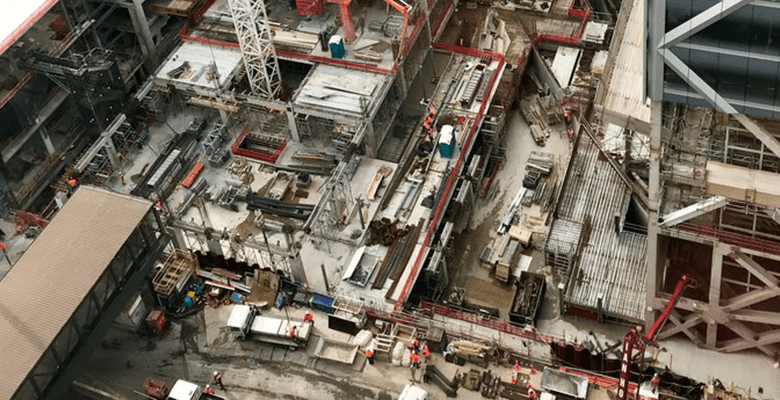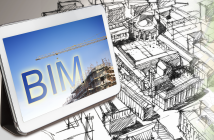The City Rail Link tunnel is steadily taking shape underneath Auckland’s CBD

The largest infrastructure project ever to be undertaken in New Zealand, the link will create a 3.45km twin-tunnel rail link up to 42 metres below Auckland’s city centre.
It includes a redeveloped Britomart Station, two new city centre stations and a redeveloped Mt Eden Station, where the CRL connects with the existing Western Line.
The McConnell Dowell and Downer joint venture Connectus is delivering Contract 2 for City Rail Link Limited.
This involves the construction of rail tunnels within the Albert Street road corridor from Customs Street West to Wyndham Street, together with a new stormwater line from Swanson Street to Wellesley Street, and the diversion and protection of a large number of underground utilities.
The McConnell Dowell and Downer (MCD) joint venture has now started backfilling the trench above the tunnel box.
Behind the hoardings along Albert Street, the Connectus team reached another big milestone on 8 October commencing the backfilling of the trench.
With over half of the Albert St tunnel box construction completed, it is now time to start working back up to road level using a mixture of materials.
The first 70 metres is getting backfilled with 10,000 m3 of materials.
In total, 50,000 m3 of material will be used to backfill the Albert Street trench – the equivalent of 20 Olympic swimming pools.
MCD Project Manager Jamie Porter says: “It has been a very satisfying project due to its many engineering technical challenges.
“On a personal level it is very fulfilling knowing we are building something for the future generations that is much kinder on our environment.”
Earth wall
The backfill of the cut and cover trench includes the construction of a Mechanically Stabilised Earth (MSE) wall.
This is required in order to retain the Contract 2 works backfill when the next stage of CRL (contract 3) ties into the contract 2 tunnels and continues the twin tunnels to the south.
The MSE wall spans 13m across the trench and is 7.5m in length.
The wall will be constructed in aggregate layers, separated by a material called geotextile which provides reinforcement for the wall.
The last 3,500 m3 is being dug and removed from the trench.
This will be completed by loading a skip in the trench, and lifting the skip bin out of the trench before tipping the material into a truck and carting off site.
Currently there are approximately 1000 skips equating to 300 trucks worth of material remaining to be removed from the trench.
In total, 77,000 m3 of spoil will be removed – the equivalent to almost 31 Olympic swimming pools.
Tight tunnelling
The remainder of the trench excavation is under Customs St intersection, one of the busiest intersections in the country.
Although there is only 30 metres of tunnelling under Customs St, the stringent controls still need to be in place and monitored.
Completing this section of work will connect the City Rail Link tunnel on Albert Street to the tunnels built through the adjacent Commercial Bay site, while keeping traffic and pedestrians moving above ground on Customs Street at all times.
The team installed the temporary struts and walers to support the walls of the cut and cover trench.
Currently, the team is half way through the excavation under the Customs Street traffic deck.
MCD Site Senior Executive and Project Engineer Grant Maclean is in charge of making sure the team complies with the Underground Health and Safety Act and mining regulations.
Maclean says it was “a great achievement” to complete the installation of 80 tonnes of walers and props to support the excavation within the tight confines of the underground environment and with limited machinery assistance at times.
“We now move on to complete excavation of the remaining section over the next few weeks, working two 10 hours shifts per day in an urban environment to achieve our targets.
“This requires careful consideration of planned night works in order to minimise disturbance to our neighbours”.
Meantime, City Rail Link’s Albert Street tunnel box is well underway, with more than 50% completed.
The total length of the tunnel box to construct is about 350 metres and 13 metres wide.
So far, 252 metres of floor has been constructed, 204 metres of walls poured, and 132 metres of roof completed.
The tunnel box is being constructed in 29 sections, from the southern (Wyndham St) end downhill to the Albert/Customs St intersection.
The first 60 metres of the trench have had their lower struts removed.
The team is now waterproofing and protecting the tunnel rooftop at this location, ready for backfilling.
MCD Area Manager Mark Anderson says the project has come a long way since construction started in December 2015.
“A considerable amount of temporary works has been completed over the past couple of years in order to enable the construction of the permanent concrete tunnel box at the base of the cut and cover trench.
“This is an enormous achievement for everyone involved and it is exciting to now be able to walk through sections of completed tunnel box, 18m below the road surface.”
These twin tunnels will in time service the busiest commuter rail service in New Zealand.
Works sequencing
There are phases the team goes through for each section of the tunnel box construction.
The construction starts with pouring the floor and shotcreting the walls, then the team install a waterproofing membrane on floor, walls and roof, before tying the steel bars together ready for the concrete pour.
Once three sections of the tunnel box have been built, the team can remove the struts.
They then waterproof the top of the roof and pour the final protective concrete layer.
The remaining 14 metres of trench is then progressively filled up with backfill materials.
The final stage is the reinstatement of the road.
This sequence will continue all the way down to the Customs Street intersection.
MCD Superintendent Grant Myocevich says “this project has been very challenging, working on one of the busiest main streets in central Auckland.
“The site is extremely confined.
“Good logistical coordination is critical to ensure we get concrete, pumps and steel deliveries daily.
“Good communication between engineers, supervisors, the workforce and the deliveries is a must on this project.”




